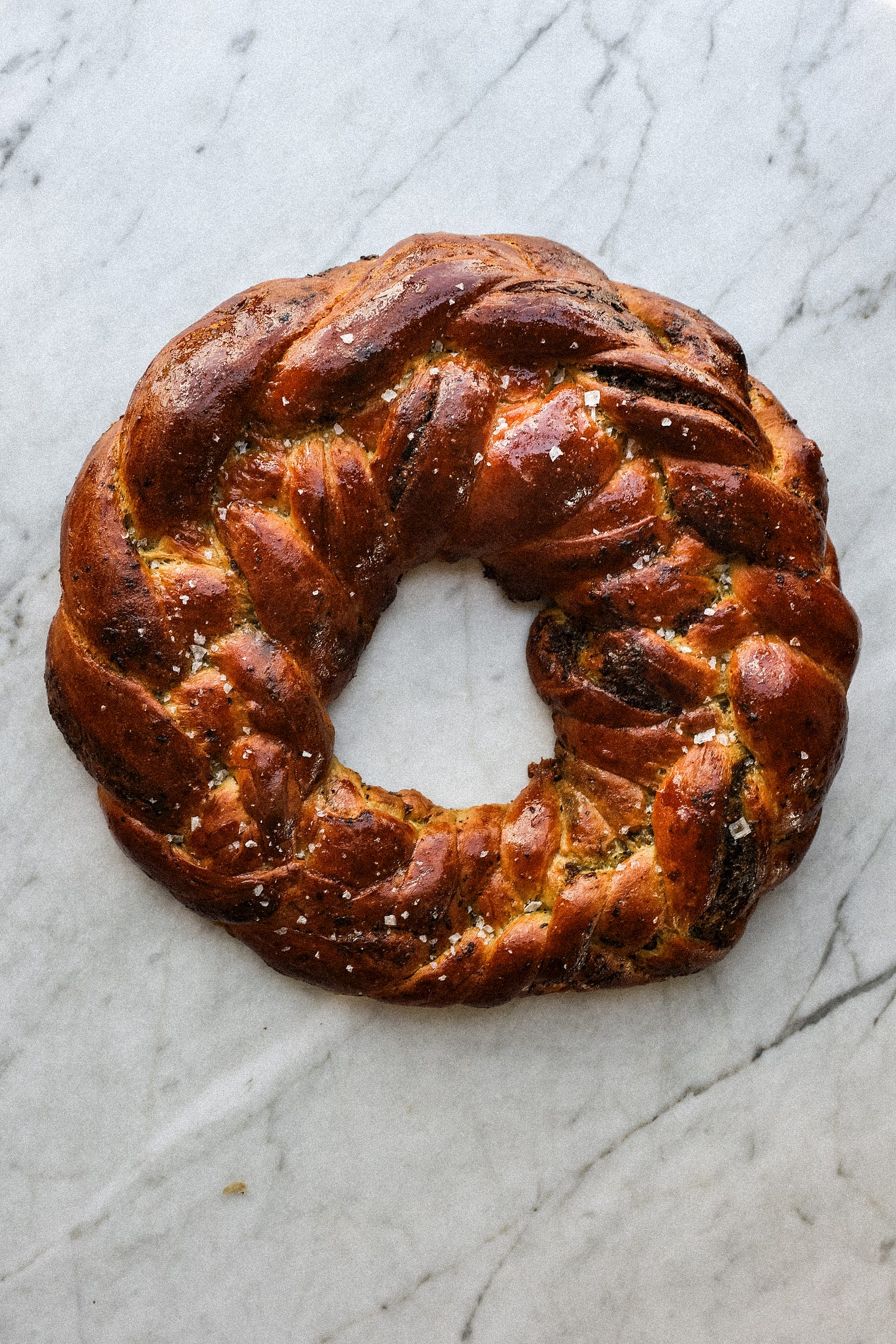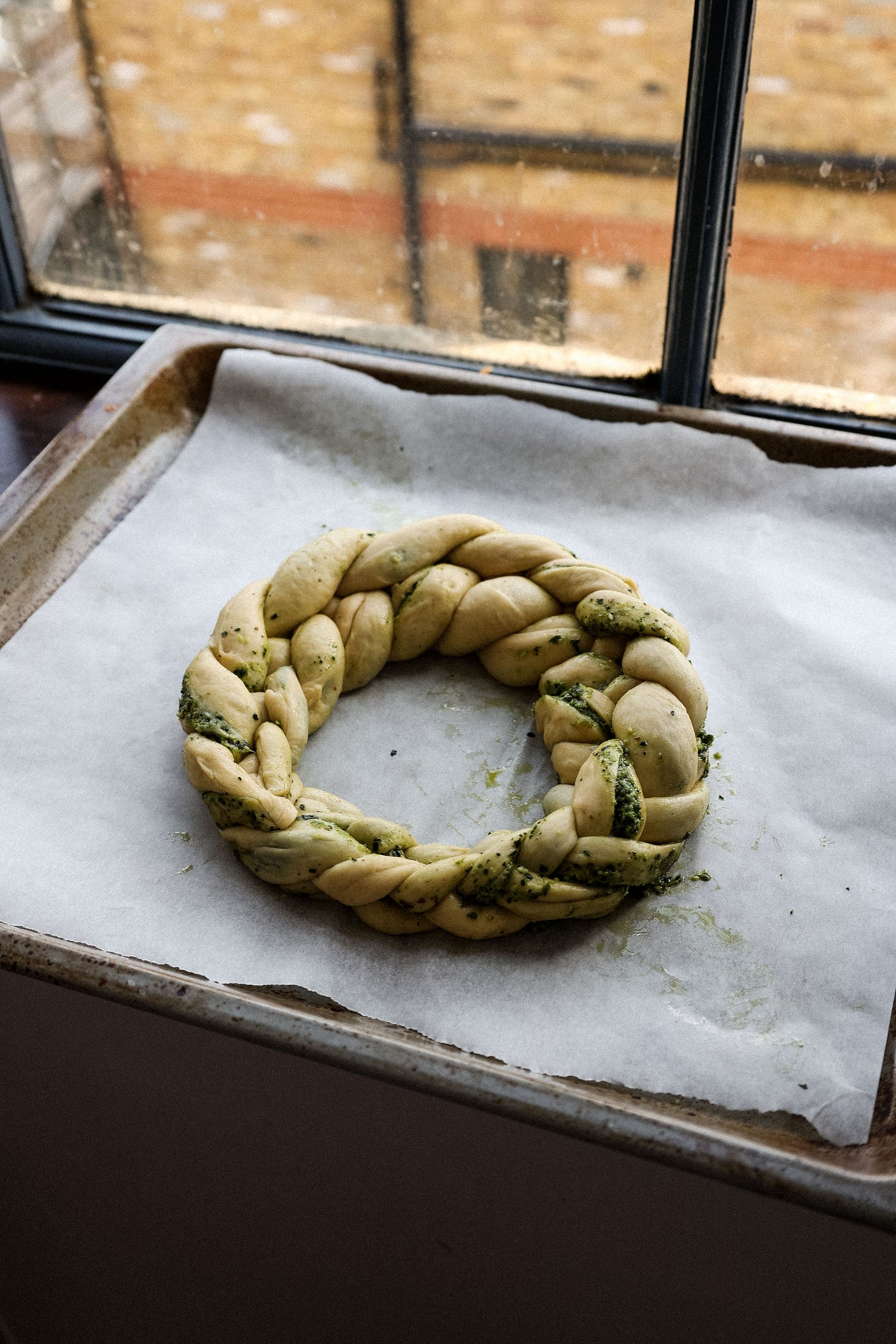A warm loaf sits on my counter, fresh from the oven and steaming as it cools. The air in the kitchen is heavy with its scent, of cheese and herbs roasting in the hot oven, their perfume released just as the crust turned golden and glossy beneath a brushing of egg yolks. In that moment, I want nothing more than to tear into it.
Broadly speaking, few foods are more elemental, or delicious, than bread. Seemingly simple in composition, the most basic breads are made from just flour and water, shaped by time and experienced hands into something far greater than the sum of their parts. With an elastic structure formed by a network of protein molecules and microbes like yeast imparting layers of flavour and texture, dough is not a static thing. It is a living cluster of interactions, not unlike the social fabric that binds us to one another.
Like a loaf made up of elastic bonds of gluten formed through the act of kneading, communities are held together by similar invisible ties of care and reciprocity, nurtured through meaningful, and sometimes effortful, interactions. Breaking bread is also a powerful metaphor for connection and shared experience. It is hospitality and generosity made visible: the giving of time, space, and resources to others. To break bread is to participate in a kind of unifying communion, sacred or otherwise: we tear from the same loaf, acknowledging our common hunger. Bread sustains life. In some traditions, it represents life itself.
These connections are not bound by borders: bread is fundamental to cuisines around the world and I would struggle to name one in which it doesn’t play a vital role. Whether made from wheat shaped into boules, corn pressed into tortillas, teff fermented into injera, or buckwheat mixed into blini, breads are endlessly adaptable. They hold and deliver, absorb and extend. A piece of bread, even with little else on hand, can make a meal.
Yet despite the diversity of its glorious forms, I always seek out the same simple pleasure: a loaf of freshly baked, yeast-leavened bread. Cratered with holes where air was trapped in a hot oven, with a chewy, open crumb and subtle tang of fermentation, good bread needs little enhancement. I slather mine with butter, pinch some flaked salt between my fingers, and watch as it melts into the warm, soft interior. These moments are blissful.
Lately, this love of mine has taken on a new form: a loaf that combines pillowy milk bread with bright, flavourful pesto made with abundant olive oil and parmesan. Pesto is part its architecture, tucked into strips of dough and woven into a neat braid.
While writing this recipe, I played around with how this might work: would I knead pesto into the dough itself? I was afraid that the added moisture could have a negative impact on the density of the dough and its ability to rise. Slather all of the pesto in a single layer, then roll it up and cut the roll in half, babka-style? It felt too messy and revealing. I aspired for a tidy loaf with a generous amount of pesto woven in. Finally, I landed on the idea of rolling pesto into strips of dough and braiding them. The result is loaf as beautiful as it is delicious, with pesto marbled throughout a wonderfully light, enriched crumb begging to be torn into. Serve it as is or alongside dips, salads, soups, pasta, or for making incredible sandwiches. Even the stale ends have their place, torn into croutons or blitzed into breadcrumbs and toasted for a flavourful panzanella or pasta topping.
Ultimately, baking bread requires the same things that we ask of one another: time, patience, attention, and faith in the process. Perhaps the actions are complex, but both are deeply worthwhile. When we bake a loaf and break it open at the table, we’re not just feeding ourselves, we’re participating in something older than any recipe: a practice of care, offering, and connection. I hope you enjoy it x







